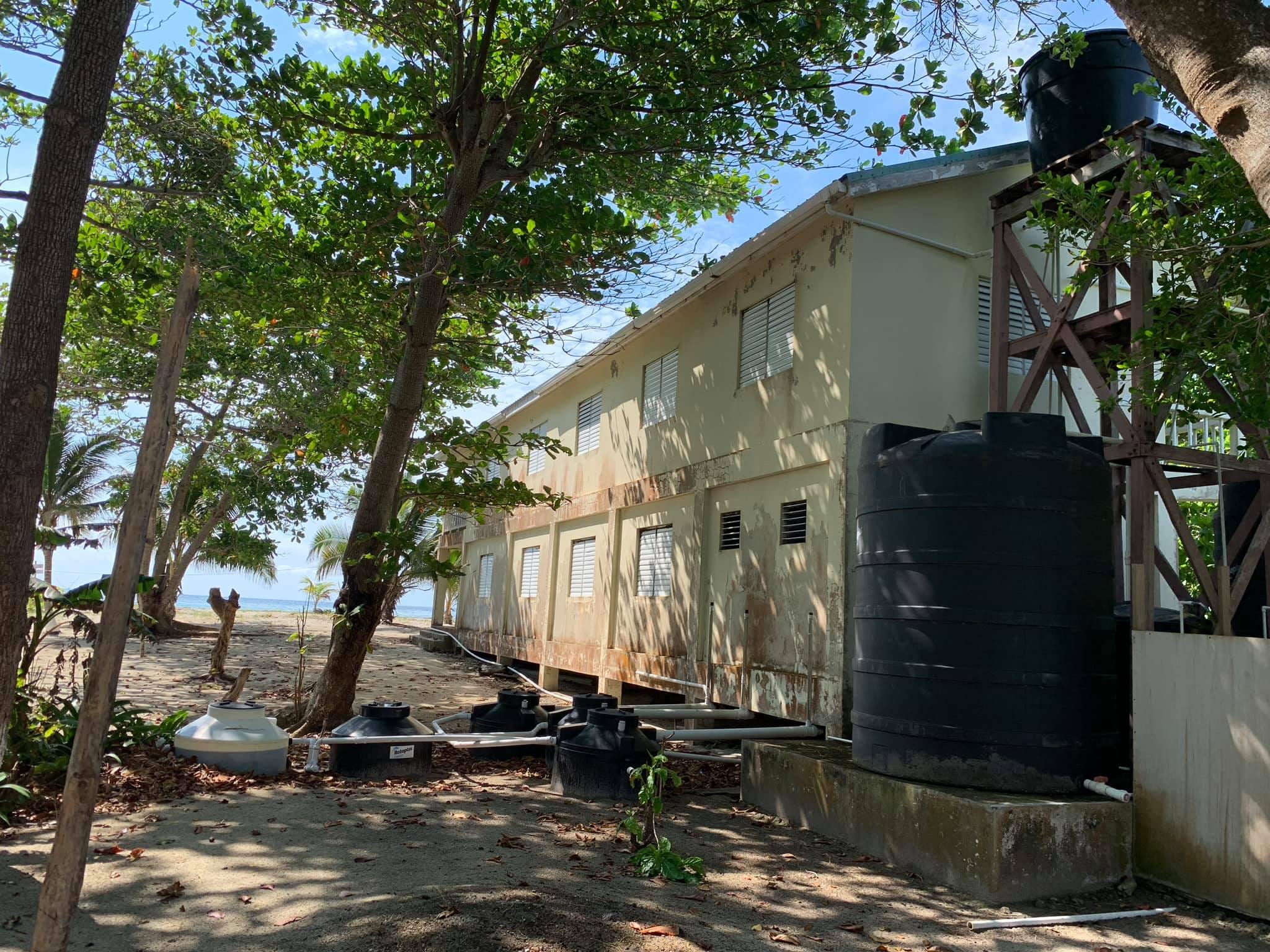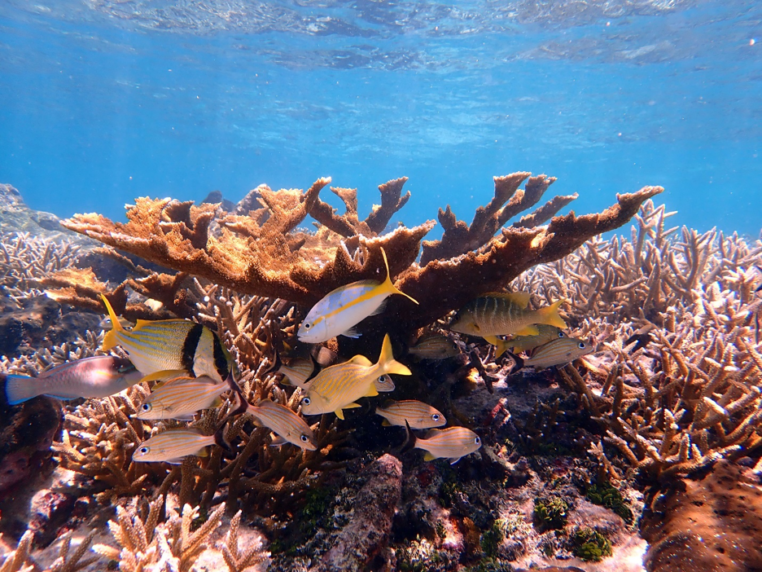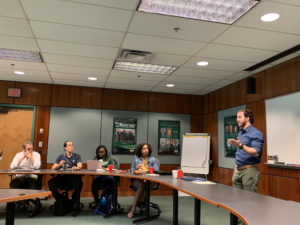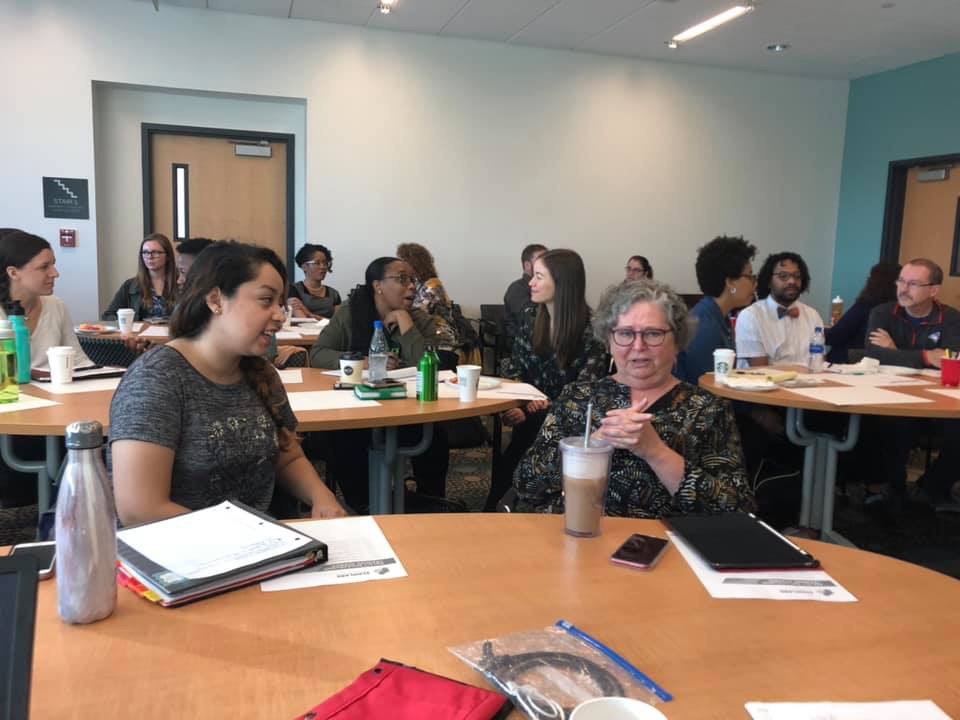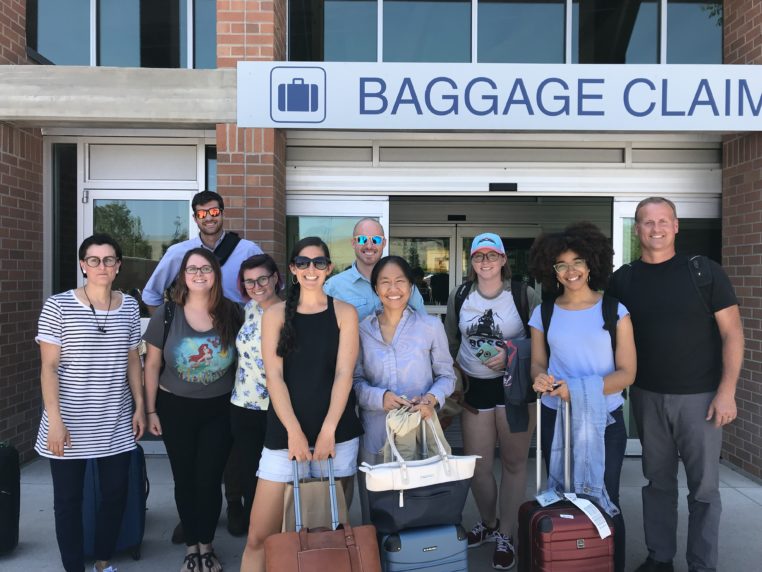Aquaculture and Aquaponics at the MOTE Aquaculture Research Park
by Estenia Ortiz Carabantes
Located in Sarasota, Florida lies a research and development facility dedicated to increasing domestic aquaculture production to feed local residents of Florida in a sustainable manner. This facility is called the MOTE Aquaculture Research Park (MAP) and is led by senior scientist, Dr. Kevan Main and her team of experts. On October 4th, 2019, several STRONG Coast fellows and special guest, Dr. Jesse Edwards from the Chemistry Department at FAMU, met with Dr. Kevan Main a to tour the Mote facility and learn about their work with integrated aquaculture systems and fisheries enhancement.

MAP focuses on marine and freshwater land-based aquaculture systems that are used for fish stock enhancement and food production. These systems are maintained in a sustainable manner in that the water that is used for production is reused. These recirculating systems at MAP use mechanical and biological treatment methods such as biofilters to purify the water and ensure conditions are suitable for the fish.

The biological filter media allows nitrifying bacteria to colonize and oxidize ammonium, a waste product from the fish that is also toxic to them. The nitrification process, and removal of harmful concentrations of ammonium, enables the water to be recirculated. As a result, there is little to zero water discharge from this facility making it a top leader in the U.S. on developing marine recirculating aquaculture methods.
Another use of these recirculating systems is to grow plants that can be used for consumption or ecosystem restoration. MAP combines technology in aquaculture and hydroponics to grow fish, sea vegetables, and certain wetland plants. Dr. Main has worked closely with Gil Sharell from Aquatic Plants of Florida to innovate efficient and sustainable freshwater and salt-water aquaponics systems for these purposes. While most aquaponic production has focused on freshwater species, MAP expands that scope to marine aquaponics.


Current research looks at growing red drum, a hearty fish that is easy to cultivate, with sea purslane, a Florida native sea vegetable. Sea purslane is commonly found on sand dunes along coasts and is vital to stabilizing these coastal zones and substrates. Cultivated sea purslane from MAP is sold to local restaurants and farmers markets. This plant is also a common in Caribbean islands and is frequently found in markets in Asian and European regions. It is in the same family as spinach, but has a milder and saltier flavor which pairs up nicely with the fresh grown red drum fish farmed at MAP. Dr. Suzanne Boxman’s research as a master’s and doctoral student in the USF Department of Civil and Environmental Engineering, focused on two of MAP’s projects. Some products from that work, include a video on cooking sea purslane and a publication, Evaluation of water treatment capacity, nutrient cycling, and biomass production in a marine aquaponic system.
MAP currently works with four fish species: red drum fish, Florida pompano, Almaco jack, and snook. Research on each of the species provides insights into developing better methods for improving captive maturation, spawning, and health management to name a few. Not only does this system provide nutritious fish for consumption, it also works to restore declining fish populations in the wild through this research. Aquaculture and aquaponic systems are gaining great traction in many parts of the world and are of growing interest in some of the coastal communities we work with in the Strong Coast program. As demand increases for food, energy, and water resources, integrated systems such as the ones we observed at MAP will be at the forefront of ensuring we address these needs in a sustainable manner.
About the Author. Estenia Ortiz Carabantes is a 1st year Ph.D student in Environmental Engineering at the University of South Florida (USF) in Tampa, FL. She received her BS in Environmental Engineering Sciences at the University of Florida (UF) in Gainesville, FL and her AA at Miami Dade College in Miami, FL. Estenia previously worked with understanding mercury capture using modified activated carbon and has served on several university executive boards involving outreach and STEM education. Her research interests include water quality, water reuse, sustainability, food-energy-water systems, food security, and human and economic development. Estenia’s current research focuses on the the food-energy-water nexus as it relates to residential food production. In order to combat urban food insecurity, she hopes to continuously examine existing green infrastructure and re-imagine their function through a cultural, educational, and engineering lens.
STRONG COASTS is supported by a National Science Foundation Collaborative Research Traineeship (NRT) award (#1735320) led by the University of South Florida (USF) and the University of the Virgin Islands (UVI) to develop a community-engaged training and research program in systems thinking to better manage complex and interconnected food, energy, and water systems in coastal locations. The views expressed here do not reflect the views of the National Science Foundation.


